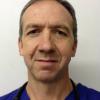Contents:
Who can have ablation for atrial fibrillation?
Almost anyone can undergo ablation for paroxysmal atrial fibrillation. Patients must be able to lie flat without discomfort. Some may need to be able to tolerate a general anaesthetic. The vast majority will need to have ablation performed whilst taking blood thinning medications such as warfarin or rivaroxaban, usually for at least three week beforehand and so a history of bleeding previously may preclude this. The size of the left atrium is also important. If it is very enlarged (an effect of having had AF for a long time) this implies the success rates will be lower. A left atrium of more than 5.5cm usually means ablation is not offered, but some patients may still be suitable.
What are the pros and cons of atrial fibrillation ablation?
Atrial fibrillation ablation is helpful as it aims to completely cure the abnormal heart rhythm, meaning that there will be no further symptoms of palpitation, breathlessness or dizziness. Curing AF would also be expected to reduce a patient’s risk of stroke in the future. However, as the recurrence of AF after ablation is still high, it has not yet been proven whether ablation reduces stroke risk and for this reason patients are currently recommended to continue with blood-thinning drugs afterwards (if they needed them before the procedure).
The major drawbacks are the risk associated with the procedure, which is 3-5% and the high requirement of needing more than one ablation procedure to achieve a cure. At least 50% of patients with PAF will need a second procedure and some might need more.
What if ablation is not performed?
If ablation is not performed and drugs are taken instead, AF will continue to occur and will always come back at some point. The natural history of AF is that it gets more frequent with time and the episodes last longer. Ultimately AF will one day become persistent i.e. present all the time. Although ablation can still be performed at this stage, success rates are lower. This potentially justifies undergoing more than one ablation procedure to achieve a permanent or at least relatively long term ‘cure’.
Is paroxysmal atrial fibrillation ablation new?
Yes, ablation for PAF is still relatively new although it was first described 15 years ago. More technologies to achieve pulmonary vein isolation have been developed over the years that offer potential advantages but success rates have remained fairly stable for some years. The complication rate has certainly fallen dramatically since inception of PAF ablation, in particular the risk of stroke.
Is pain relief given if general anaesthetic is not used?
Yes, intravenous drugs are administered for pain relief and sedation to make patients as relaxed and pain free as possible. Local anaesthetic is also used at the top of the leg before the wires are inserted.
Is surgery required?
No, wires (catheters) are inserted through small holes at the top of the leg, but a general anaesthetic is sometimes necessary. Surgery is only required if major bleeding occurs which cannot be controlled. There are surgical techniques to perform PAF ablation but most of these are associated with higher rates of complications and are mostly only done in conjunction with other types of heart surgery e.g. valve surgery.
Will I need to take blood-thinning medication after ablation?
All patients with AF and a CHADS-VASc score of 1 or more need to take blood-thinning drugs (warfarin or a NOAC) to help reduce stroke risk. Current guidelines recommend that this does not change after ablation, even if thought to be successful, as there is always a risk of AF returning at some point in the future. Therefore ablation is not used as a tool to withdraw anticoagulation.
Will I need to take anti-arrhythmic drugs after ablation?
Anti-arrhythmic drugs continue after ablation in most cases until the first follow up visit. Occasionally ablation can cause an inflammatory reaction in the heart leading to a flurry of AF and it is usually thought best to continue these drugs for at least 6-8 weeks after the procedure. They are typically stopped at the first consultation if all is well.
What follow up is required following ablation?
Patients are usually seen 2-3 months after a PAF ablation. A cardiac monitor may be arranged before the consultation to help confirm the absence of AF but in the majority of cases a lack of symptoms of AF is the best guide. If there has been a recurrence of AF after the first 6-8 weeks, another ablation procedure is usually offered. If not, follow up continues for approximately 1 year to ensure AF does not return but this varies from physician to physician.
How soon can I do physical exercise after ablation?
It usually takes a couple of days for the small holes at the top of the leg to heal. Light exercise can then be resumed. Strenuous exercise is best delayed for a week after the procedure.
How long can I not drive for?
If you are a Class 1 license holder (not HGV/passenger vehicles), then you cannot drive for 48 hours after ablation
Can ablation be repeated if unsuccessful the first time?
Yes, ablation can be performed as many times as necessary to cure the AF and pulmonary vein isolation does not cause significant damage to the heart. However, if no progress has been made after 2 procedures, most physicians will only proceed to a 3rd or more procedure under certain circumstances. It takes 6-8 weeks after the procedure for the full effects of ablation to develop. If AF returns within this time period, it is usually ignored in terms of indicating whether the procedure has been successful or not.
What happens if ablation does not work?
If ablation does not work, antiarrhythmic medications will contune afterwards although the success is variable. If symptoms cannot be controlled with drugs, there is the option of inserting a pacemaker and performing a procedure called AV node ablation. AV node ablation destroys the connection between the atria (the top chambers of the heart) and the ventricles (the bottom chambers). Once performed this means the heart rate is controlled by the pacemaker and becomes regular. The atria continue to fibrillate but signals are no longer transmitted to the ventricles below. This stops the heart beating fast and irregularly but doesn’t cure the AF and patients are dependent on the pacemaker for the rest of their lives. This procedure is irreversible and is usually only performed as the last resort or in patients not suitable for PAF ablation (usually due to high risk or low success rates).
Jump to:
-
What is Atrial Fibrillation?
-
Treatments for Atrial Fibrillation
-
Complications from Catheter Ablation for Paroxysmal Atrial Fibrillation (PAF)







